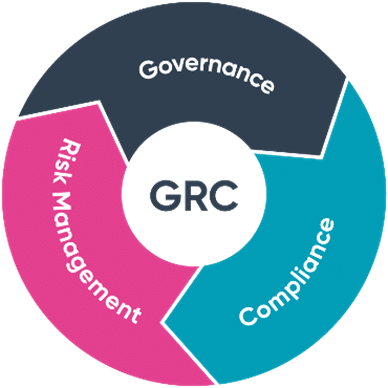Choosing the Right Tool for Your GRC Needs
When it comes to Governance, Risk, and Compliance (“GRC”), many compliance-driven organizations select a tool based on surface-level features, market popularity, high-level vendor demos, or simply fulfilling an immediate need, hoping it will be the perfect fit. But too often, selecting the tool ends up in a lack of fully evaluating how it better fits their specific operational and compliance needs or worse without considering a long-term strategy. Selecting the “right” tool may be challenging and will require a careful review of how well it can align with your business objectives, properly integrate across various teams beyond headquarter, and help ensure risk and compliance goals are met and managed for the long-term.

But why do many organizations miss the deeper, operational questions to determine whether the tool will actually work.
In this blog, we’ll share practical tips and/or insights to help guide your decision-making process as well as highlight some common oversights organizations often make when selecting a GRC tool. With the right approach, your organization can select a tool that not only adds value and is well-suited to fit your needs but also strengthens your overall operational efficiency, compliance readiness, and security posture.
Understand the Operational Lift Required to Support the Tool
Too often, organizations decide to take a one-size-fits-all approach. While this might seem efficient, it rarely delivers long-term value as organizations are unique, evolve overtime, and vary in size. The truth is that there is not universally “best” GRC tool.
To ensure picking the right tool, begin by understanding how much effort it takes to implement, maintain, or use the tool. A tool that requires constant IT support or manual data entry can quickly become a burden on the team.
Consider the following questions during this process:
- How does this tool fit or feed into existing systems and workflows?
- Can the solution be customized, and to what extent?
- Can we customize on our own or does it have to be customized for us by the vendor?
- Does it comply with relevant industry standards and regulations?
- What automation capabilities does it offer to reduce manual effort?
Once you understand the operation lift, define what success means for your organization. Are you looking to streamline audits, improve risk visibility, or reduce compliance fatigue?
Look for solutions that offer customizable compliance frameworks to adapt to evolving regulations (like HIPAA, GDPR, SOX, or applicable industry-specific frameworks) and integrate smoothly into your current operational structure. The tool should also be scalable and future-proof, with the flexibility to grow alongside your organization and stay current as regulatory and risk landscapes adapt.
By thoroughly understanding your organization’s needs, objectives, and pain points, you’ll be better equipped to choose a tool that enhances and streamlines your day-to-day operations, rather than adding unnecessary complexity to your internal environment.
Avoid Common Missteps When Selecting a GRC Tool
Selecting a GRC tool can become daunting, especially if the tool is not identifying and accurately managing risk. Big corporations tend to rush into purchasing a GRC tool without considering how it will be rolled out into our functions, hindering the effectiveness of their implementation.
Here are some common oversights to avoid:
- Not Assessing Current Tools & Capabilities
– Organizations jump into buying new tools without considering what’s already in place. Often, enhancing or adding to existing tools may be more effective than starting from scratch. Before deciding on a tool, conduct reviews, discussion, and request additional demos of the ones already in place and in use. Identify any gaps that may help to sway your decision when choosing one tool over another. - Not Comparing Apples-to-Apples
– GRC tools vary widely, so it’s important to evaluate and compare them based on your organization’s specific challenges and/or requirements. Focus on how each tool addresses your immediate needs of solving current problems, supports long-term goals, and can scale with your organization, rather than selecting one with the most features or is the most popular. The right tool is the one that fits your organization best. - Overlooking Cross-Functional Impact & Proper Integration
– A GRC tool should scale across different departments, improve data visibility, and simplify daily workflows for teams. Compliance is a team-wide effort, so choose a tool that integrates well within your ecosystem and keeps efforts in check and complaint. Ensure key stakeholders from all relevant teams are involved in the selection process and implementation early on. This will help ensure all needs are met and improve collaboration for smoother integration and continued sustainable growth. - Ignoring Maturity Posture
– All organizations have different levels of maturity and direction when it comes to risk management and compliance. The right tool allows you to stay aware of your organization’s risk posture and offers a strategic approach to maintain efficiency and streamline compliance.
– About “42% of companies say their current use of IT and GRC systems need improvement,” leaving systems vulnerable to gaps and exposed to risks as detailed in this report. This lack of alignment can also slow down their ability to meet regulatory requirements as well as diminish their maturity level, especially compared to more advanced competitors. When selecting a tool, look for one that fits your organization’s current state but can also scale and grow with you, not one just based on unrealistic expectations of where you should be.
Key Features & Criteria to Prioritize in Your GRC Tool
When evaluating GRC tools, there are several key features to consider when deciding on a tool that will meet your organization’s needs. For example, the length of time required for implementation is an important factor as it can affect timelines or potentially disrupt day-to-day operations.
Here are some key areas to assess and/or look for:
Implementation & Support
- Ease of Implementation
- Assess the average time to implement policies, manage assessments, or integrate within existing systems. A smooth implementation can positively impact your team’s productivity.
- Quality of End-User Training
- Guarantee resources and support are available for internal teams. This helps address issues that may arise and ensures your team is fully equipped to use the tool effectively.
- Determine if there are any required certifications needed for internal administrative support to better streamline team operations and help improve compliance as well as maximize ROI.
Pricing & Transparency
- What is the pricing model and annual subscription cost?
- Understand the cost structure to effectively prepare for budgeting and long-term planning.
- See if the tool offers a universal cost or will it be adjusted per module or functionality.
- Are modules and functionality bundled or are they independently purchased?
- Knowing if features are bundled or sold separately can help avoid any hidden costs.
- Pricing models that allow for flexibility may be a better choice as they can scale with your organization’s expected growth.
Reporting & Customization
- Can reports and dashboards be customized?
- Check if the tool can be tailored to your needs and customized to different departments.
- Are reports and dashboards automated?
- Updates should be made automatically and in real-time or on schedule.
- Less maintenance required and more efficient monitoring and tracking.
To ensure you select a GRC tool that aligns with your organization’s goals but also provides long-term value, it’s essential to carefully weigh which key features and criteria best fit your organization’s needs.
Plan for Long-Term Success with These GRC Best Practices
Implementing a GRC tool is an ongoing process that requires careful planning and continuous evaluation. Depending on your organization’s size and complexity will determine which features matter most. To maintain ongoing success, keep in mind:
- Prioritization of Usability & Adoption
- Who is the audience? and Who will be using the tool on a day-to-day basis.
- Guarantee the tool serves the entire organization rather than just one division.
- Compliance is not just one person’s obligation but an obligation for everyone.
- Planning for Long-Term Growth
- Think about how this tool will lead to sustainable growth and seamless integration within your organization.
- Will this tool grow with your business and keep evolving, instead of just fixing today’s problem.
- Conduct Your Due Diligence
- Take the time to carefully evaluate your current tools and capabilities before making a decision. Organizations should assess and review at least 2 to 3 tools they are interested in or are considering, to select the best fit. Focus on whether you need better alignment or configuration and assess how a new solution will integrate with your existing systems.
- Regularly track progress and key metrics to help guide your organization’s maturity and ensure continuous improvement.
Choosing the right GRC tool is a strategic decision, not just a technical one. Focus on what aligns with your needs, works across teams, and can grow with you to minimize fewer risks and future readiness.
Conclusion
Choosing the right GRC tool means understanding your organization’s unique needs and challenges. By applying these practical insights around flexibility, ease of integration, and long-term scalability, you can simplify the selection process and successfully identify the best GRC solution for your organization.
Need More Guidance? Our team is here to help you evaluate, compare, and identify the right tools and solutions that align with your organization’s goals, both now and as you continue to grow. Move forward with confidence, contact our experts today!
Contact Us
References
Governance Risk and Compliance Tools: Top 2024 Guide
The Ultimate Guide to Choosing a GRC Solution
GRC Platform Selection Guide: What to Look for Based on Your Maturity Level | spog.ai






